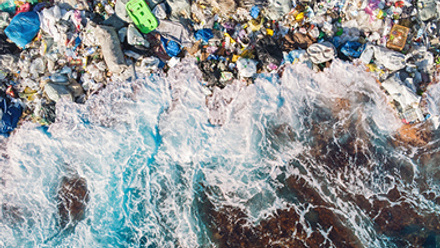Per- and Polyfluoroalkyl Substances
Per- and polyfluoroalkyl substances (PFAS) are a class of man-made chemical compounds that are of emerging concern to environmental health. A recent count has identified over 4,700 individual PFAS species. PFAS all share the characteristic of being “chains” that contain “links” made of carbon fluorine bonds (C-F). PFAS encompass a big universe of different substances that vary in state from gas to liquid or solid, all with vastly different properties.
PFAS substances have unique characteristics—resistance to heat, water, oil and stains—that make them useful in a variety of industrial applications and popular in consumer goods such as waterproof outdoor gear, non-stick cookware and stain-resistant upholstery. Many PFAS are stable and long-lasting in the environment, acquiring the name “forever chemicals.” Industrial use of some of these compounds has been halted; however, many derivatives are still in commerce and more are under development. PFAS are now found in many compartments of the environment.
There is a pressing need to identify an approach to characterize and measure PFAS routinely, as well as assess their potential effects on human and ecological health. To do so, there is a lot of research directed at understanding the sources of PFAS, their fate and transport in the environment, and their potential toxicity to humans and wildlife. SETAC scientists are heavily involved in this work, some of which is presented below.
Presentations
SETAC Journals
- Understanding the Environmental Risk from Exposure to Per‐ and Polyfluoroalkyl Substances (PFAS)
ET&C 40: 539–957 (2021) - Ecological Risk Assessment for Per- and Polyfluorinated Alkyl Substances (PFAS)
IEAM 17:670–752 (2021) - Environmental Risk Assessment of PFAS
Virtual Issue (2019) - A Critical Review of the Application of Polymer of Low Concern and Regulatory Criteria to Fluoropolyers
IEAM 14: 316–334 (2018) - Fate and Effects of Poly- and Perfluoroalkyl Substances in the Aquatic Environment
ET&C 33: 1921–1929 (2014) - Perfluoroalkyl and Polyfluoroalkyl Substances in the Environment: Terminology, Classification, and Origins
IEAM 7: 513-541 (2011)
SETAC Globe


